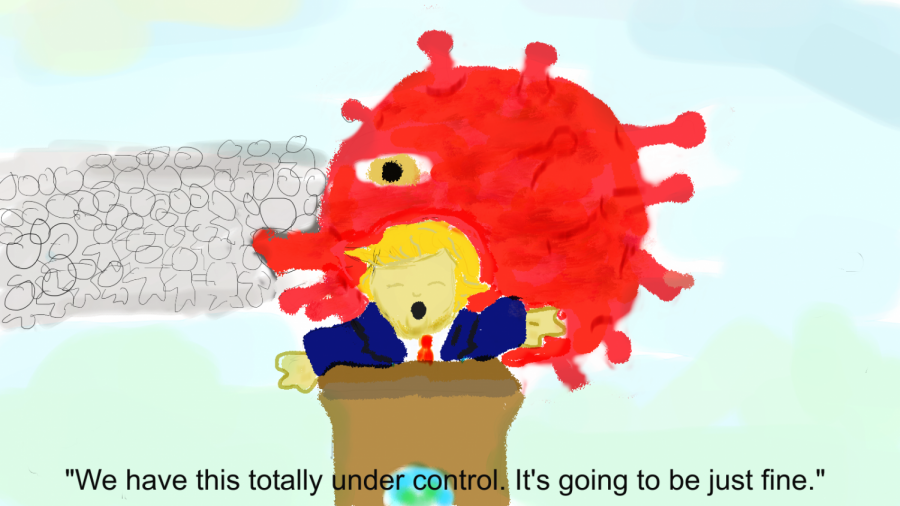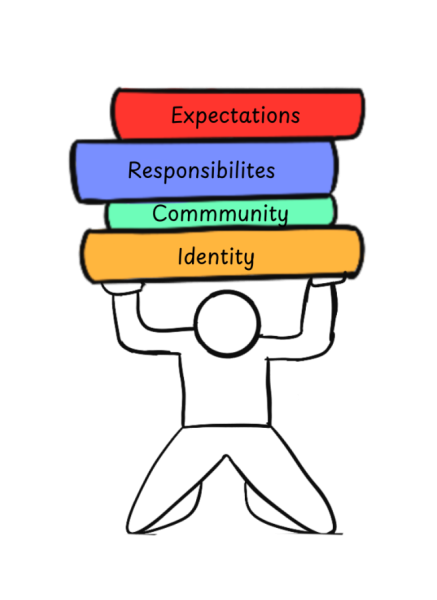Inaction: the downfall of the United States
Better preparation and preventative measures would have helped the U.S.combat COVID-19
A friend of mine visited India in February, despite the looming threat of the coronavirus. When he returned, he mentioned something shocking: airport security in India was stricter in screening than the security in the U.S. In fact, he was subject to no additional screening when he returned to the U.S.

Government officials downplayed the severity of the pandemic, luring Americans into a false sense of security.
The effects of this inaction are visible today, with the number of COVID-19 cases rising in the U.S.
The American government should have heeded the warnings of other countries and taken proper precautions early on.
On Jan. 21, both the U.S. and South Korea reported their first case of COVID-19. However, following this revelation, each country took a different approach in slowing the spread of the disease.
According to NPR, South Korea began creating a test for the virus in mid-January. They tested anyone who was even slightly suspected of having COVID-19. By March, South Korea was doing an average of 10,000 tests per day. In comparison, the U.S. was only testing around 3,197 samples a day. As of April 11, South Korea has 10,480 cases of Covid-19, compared to 526,396 cases in the U.S.
A lack of testing allowed the virus to spread rapidly in communities. According to the New York Times, up to 25 percent of people infected with COVID might not show symptoms. These people are known as asymptomatic carriers, and can unknowingly spread the virus to more vulnerable populations, triggering outbreaks.
Without proper testing, there is no way to detect if individuals are carriers.
The U.S. was simply not prepared for a pandemic. According to the New York Times, a simulation code named “Crimson Contagion” was run last year and revealed that the federal government was both underprepared and poorly funded to fight a virus with no known treatment.
This warning came in Oct. 2019, three months before the COVID pandemic. Despite these warnings, the federal government did nothing to prepare for possible pandemics in the future.
The government’s refusal to take proper precautions stemmed from officials downplaying the threat of the virus.
In January, President Donald Trump said the United States had the situation “totally under control.” Nancy Messonnier, director of CDC’s National Center for Immunization and Respiratory Diseases, confirmed this, adding that U.S. officials believed the risk to the American public was still low.
Media outlets added fuel to the fire with opinion pieces such as “Beware of the Pandemic Panic” and “Get a Grippe, America.”
These articles warned the public against overreacting to the COVID pandemic, stating that the flu had worse fatalities. However, COVID has a hospitalization rate of 19 percent which is 17 percent higher than the flu, showing that COVID is more dangerous than the flu.
People in the U.S. continued to travel, increasing the spread of the virus. Meanwhile, in Taiwan, any arrivals from Wuhan were screened even before human to human transmission was confirmed by the CDC on Jan. 30. This quick action helped slow the spread in Taiwan where there are only 388 cases as of April 13.
Ultimately, the U.S. took hardly any preventative measures to combat the spread of COVID. While U.S. officials stood by, shaking their heads in denial, countries such as Taiwan, Singapore, and South Korea took rapid steps to lock down areas and curb the spread of the virus.
Doing more testing, giving the public proper information in a timely manner and quickly shutting down affected areas would have contributed to a better response by the U.S. Had the virus been handled in a timely and proper manner, we would not being seeing as many cases as we do today.












Edward Zen • Apr 18, 2020 at 3:55 pm
Despite Taiwan’s action to curb the COVID-19, the World Health Organization (WHO) continues to ignore Taiwan, mainly because of China’s longtime claim that Taiwan is one of their provinces. Most Taiwanese families, however, heed the lessons from the 2003 SARS outbreak.